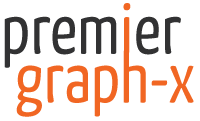ROSEVILLE SCREEN PRINTING
Premier Graph-X, Inc is your source for custom screen printing in Roseville, Rocklin, Lincoln and Sacramento
Screen printing is the tried and true decoration of choice for t-shirt, sweatshirts and other apparel where you need a high quality logo produced in large quantities.
Premier Graph-X, Inc is a family owned screen printing shop based in Roseville, CA. Whether you are looking for just 20 screen printed hoodies or you need a few hundred screen printed t-shirts. We’ve got you covered.
How does screen printing work?
Screen printing is arguably the most versatile of all printing processes. It can be used to print on a wide variety of substrates, including paper, paperboard, plastics, glass, metals, fabrics, and many other materials. including paper, plastics, glass, metals, nylon and cotton. Some common products from the screen printing industry include posters, labels, decals, signage, and all types of textiles and electronic circuit boards. The advantage of screenprinting over other print processes is that the press can print on substrates of any shape, thickness and size.
A significant characteristic of screen printing is that a greater thickness of the ink can be applied to the substrate than is possible with other printing techniques. This allows for some very interesting effects that are not possible using other printing methods. Because of the simplicity of the application process, a wider range of inks and dyes are available for use in screen printing than for use in any other printing process.
Screen printing consists of three elements: the screen which is the image carrier; the squeegee; and ink. The screen printing process uses a porous mesh stretched tightly over a frame made of wood or metal. Proper tension is essential to accurate color registration. The mesh is made of porous fabric or stainless steel mesh. A stencil is produced on the screen either manually or photochemically. The stencil defines the image to be printed in other printing technologies this would be referred to as the image plate.
Screen printing ink is applied to the substrate by placing the screen over the material. Ink with a paint-like consistency is placed onto the top of the screen. Ink is then forced through the fine mesh openings using a squeegee that is drawn across the scree, applying pressure thereby forcing the ink through the open areas of the screen. Ink will pass through only in areas where no stencil is applied, thus forming an image on the printing substrate. The diameter of the threads and the thread count of the mesh will determine how much ink is deposited onto the substrates.
